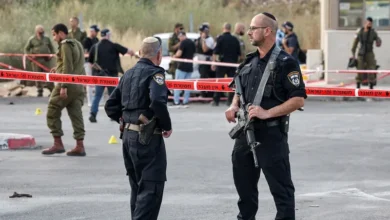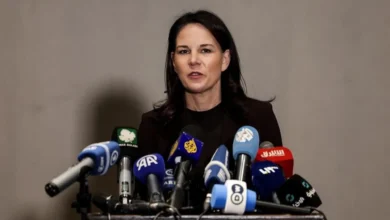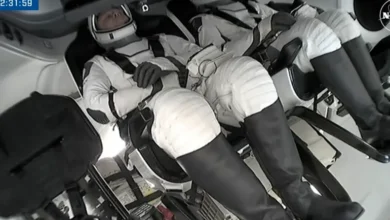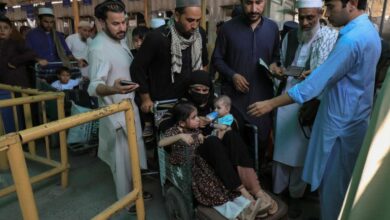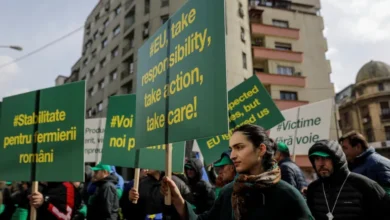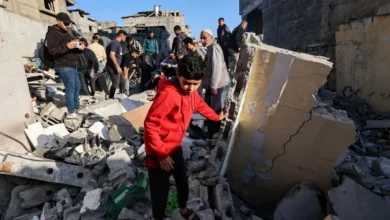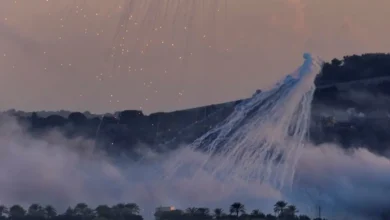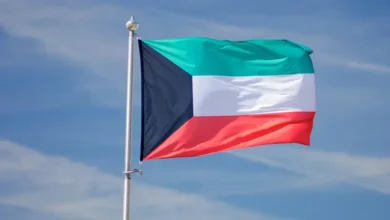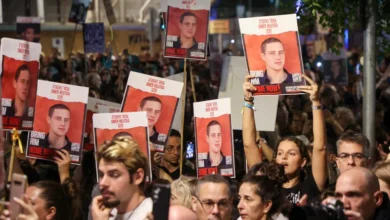‘We are facing a disaster’, Mayor of Gaza’s Maghazi camp warns
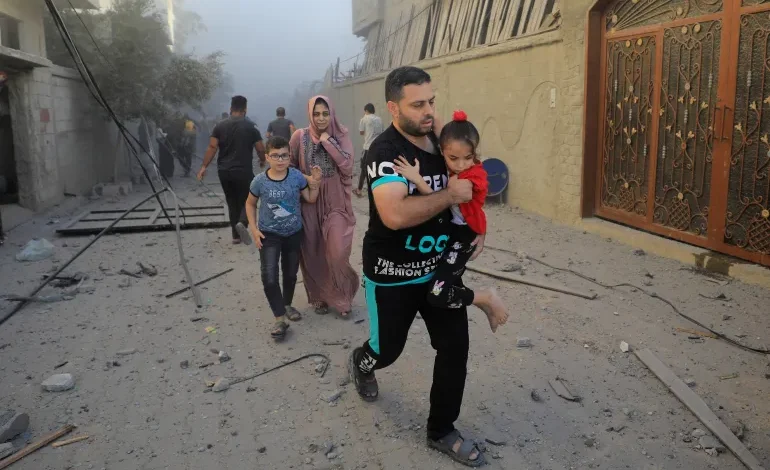
In an area less than 3 square km (1.1sq miles), 100,000 people are struggling to survive. This small patch of Gaza is rapidly becoming uninhabitable.
“We place waste in remote areas on the outskirts of the camp, but these spaces are full,” Hatem al-Ghamri, the mayor of the Maghazi refugee camp in the Gaza Strip, told Al Jazeera. “We are facing a real disaster.”
Maghazi, the smallest of Gaza’s refugee camps, located near Deir el-Balah in the centre of the enclave, normally houses 30,000 people. Now, with the displacement of residents fleeing Israel’s relentless bombardment in the north and the west, the population has more than trebled while Israel’s air raids have continued on homes and shelters here.
The camp is running into serious trouble. With waste piling up, a total lack of water and massive overcrowding, outbreaks of disease have begun.
Despite its location on the southern side of the Strip – where Israeli forces ordered civilians from the north to flee before they began their ground invasion from the north – the small camp has been subjected to intense artillery and air raids.
Such air raids on civilian camps and infrastructure have become commonplace. The Jabalia refugee camp has been targeted at least three times, resulting in the deaths of hundreds of Palestinians. Civilian infrastructure, including schools, has also been subjected to bombing in the south.
Bakery and water wells bombed
At the Maghazi camp, Israeli air raids destroyed the only bakery in the camp on October 26, the mayor said. For seven consecutive days, not a single loaf of bread has been distributed to any of the residents.
The Maghazi camp includes two centres of shelter for displaced civilians in two UNRWA schools, each now accommodating 12,000 people. A third UNRWA school was bombed.
With the overcrowding, displaced people in UNRWA schools are facing mounting challenges, including the spread of diseases such as smallpox and scabies, and a lack of access to essential resources such as water, food and children’s necessities like diapers and milk. Women also lack access to sanitary towels.“The Maghazi camp has seven water wells, two of which were targeted by the occupation in the eastern area,” al-Ghamri said. “The remaining five wells cannot be operated by the municipality due to the Israeli occupation’s prevention of fuel entry into the Gaza Strip.
“We need 300 to 500 litres of fuel to operate the five wells, and it also requires us to pump 3,000 cups. With the increase in the number of displaced people, we need to pump double the amount, but we cannot.”
Insects and epidemics have started to spread in the Maghazi camp due to the accumulation of significant amounts of waste. Workers can no longer access the usual landfill dumps in Wadi Gaza and east of the city of Rafah.
Besides the spread of disease, people are facing the prospect of starvation. “We face significant challenges in providing food in Maghazi camp,” al-Ghamri said.
“All municipalities in the Gaza Strip suffer from deteriorating machinery that needs to be replaced, and we work to maintain them periodically,” he said.“There are only two vehicles available in the Maghazi municipality, and they are not only used for municipal tasks but also for transporting the injured due to the repeated violent Israeli attacks. They are also used to transport food aid.”
Arrival of flour ‘a miracle’
The municipality of Maghazi has received 1,000 bags of flour, but only by chance, the mayor said.
“The flour was provided miraculously. When the occupation tanks targeted a car on Salah al-Din Street on Monday, we were in the area, and the UNRWA truck was on its way to Gaza City in the west of the Strip. It refused to continue its journey and contacted UNRWA to distribute this amount to the Maghazi camp [instead],” al-Ghamri said.
It won’t last long, however. The mayor explained that the camp needs 5,000 bags of flour, each containing 25kg, to provide for the residents and displaced people here every few days.
There are 30 Maghazi municipality workers, each working for eight hours on normal days. These days, they are working around the clock, under increasingly dangerous conditions.
“When one of the wells was targeted, municipal employees were working there,” al-Ghamri said. “Miraculously, they survived, and some of them were injured by shrapnel from the bombing.
“Under the coordination of UNRWA, the Red Cross and the Water Authority in Ramallah, a municipal employee inspected the main water line for the entire central region of the Gaza Strip. We are currently working to repair it after the Israeli occupation targeted and destroyed it.”
The mayor said the municipality is running out of options.
“Israeli aggression in the Gaza Strip has resulted in the killing of 10,000 Palestinians, the majority of whom are children and women. Israel is targeting doctors, health sector workers, journalists, ambulance personnel, and civil defence personnel.
“Everyone in Gaza is being targeted.”
